Many private student loan borrowers are leaving money on the table
During the “student loan crisis” last summer, when Congress let current legislation expire and interest on Federal Stafford loans doubled from 3.4 to 6.8%, many students who needed student loans to pay for school were worried that they’d be forced to pay higher interest rates on their loans.
Luckily for students, Congress came to a deal and lowered the interest rates on new federal student loans.
Federal student loan interest rates for 2013-14
For federal student loans first disbursed between July 1, 2013, and June 30, 2014, the rates are as follows:
- Federal Stafford Loans (undergraduates): 3.85%
- Grad PLUS (graduate students): 5.4%
- Parent PLUS (parents of students): 6.4%
Compared to private student loans, whose interest rates vary depending on the borrower’s credit history, these rates are a steal.
But according to USA Today, a large percentage of private loan borrowers don’t maximize their borrowing of federal student loans.
Private student loan borrowers aren’t maxing out federal loans
In fact, the newspaper found that more than half of private loan borrowers failed to max out on federal student loans, and a quarter didn’t take out any federal loans.
This is quite alarming and demonstrates the need for education about the differences between federal and private student loans. Unlike federal student loans, private student loans can have variable interest rates, some greater than 18%. This substantially increase the total amount you repay.
Additionally, unlike federal student loans, many private student loans have to be repaid while you’re in school and are not eligible for federal student loan repayment programs such as Income-Based Repayment, Graduated Repayment, or Pay As You Earn.
Additionally, your lender probably will not let you defer your loans or offer forbearance if you’re struggling to repay your loans.
Borrow federal student loans before turning to private loans
Students who take out private loans without maximizing federal student loans are leaving money on the table.
If you need to take out loans to pay for school, make sure to fill out your FAFSA and accept all of the federal loans made available to you, including Stafford Subsidized and Unsubsidized loans, as well as Federal Perkins loans, which carry a 5% interest rate. If you still need more money to pay for school after maxing out your federal student loans, then you can explore private student loans.
When borrowing private student loans, working with a reputable lender is key to avoid getting trapped in a bad situation and paying more in interest over the life of the loan. Our partners at cuStudentLoans offer competitively-priced private loans to help families afford college when federal loans and financial aid aren’t enough.
If you’re struggling to repay either federal or private student loans, we can help you figure out the best repayment plan for your situation. Give Rick and Andy a call at 1-888-234-3907 or contact us using this form.
affording college, applying to college, college costs, fafsa, federal student aid, federal student loans, federal vs. private student loans, financial aid, financial aid counseling, interest rates, paying for college, private loans, private student loans, student debt, student loans
